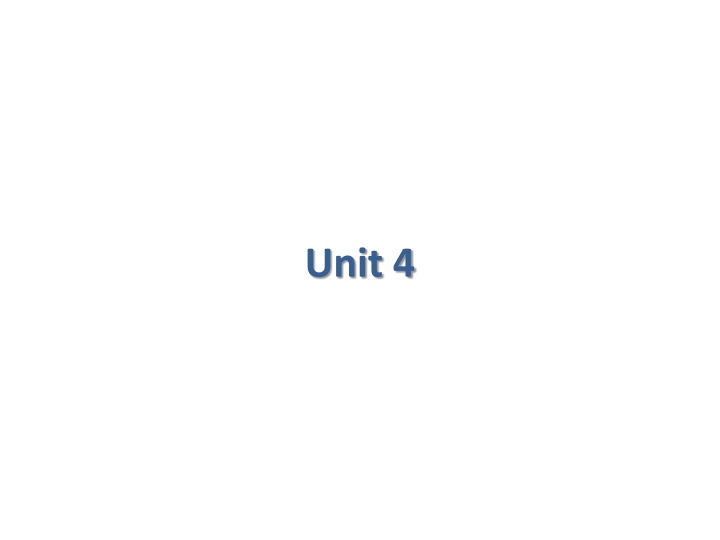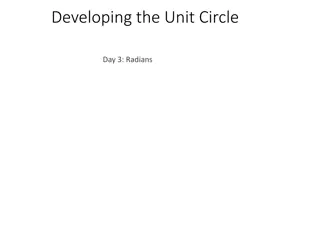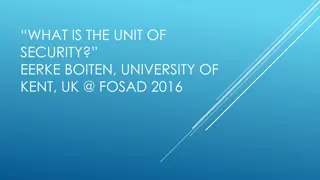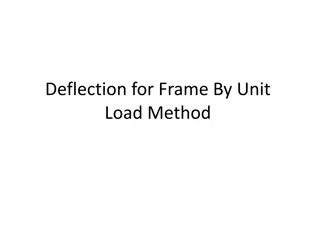
Exploring Android: History, Environment Setup, and Architecture Overview
Discover the evolution of Android, from its open-source roots to the setup requirements for developers. Explore the Android operating system's architecture, including the Linux kernel, Dalvik runtime, and essential libraries. Dive into the rich history and development tools available for creating Android applications.
Download Presentation

Please find below an Image/Link to download the presentation.
The content on the website is provided AS IS for your information and personal use only. It may not be sold, licensed, or shared on other websites without obtaining consent from the author. If you encounter any issues during the download, it is possible that the publisher has removed the file from their server.
You are allowed to download the files provided on this website for personal or commercial use, subject to the condition that they are used lawfully. All files are the property of their respective owners.
The content on the website is provided AS IS for your information and personal use only. It may not be sold, licensed, or shared on other websites without obtaining consent from the author.
E N D
Presentation Transcript
Marking System Unit IV (10 questions ) 8 questions one mark (Theory) 2 questions two marks (Code snippets) Total Marks : 12
Introduction to Android Android is an open source and Linux-based operating system for mobile devices such as smart phones and tablet computers. Android was developed by the Open Handset Alliance, led by Google, and other companies.
Android - Environment Setup Operating System Microsoft Windows XP or later version. Mac OS X 10.5.8 or later version with Intel chip. Linux including GNU C Library 2.7 or later. Android IDEs There Technologies are available to develop android applications, the familiar technologies, which are predominantly using tools as follows Android Studio Eclipse IDE(Deprecated) are so many sophisticated
Android operating system is a stack of software components which is divided into five sections and four main layers as shown below in the architecture diagram. Dalvik Runtime Libraries Linux Kernel
Linux kernel It take care he core system operations such as process management, power management, memory management, Device driver and networking. This provides a level of abstraction between the device hardware and it contains all the essential hardware drivers like camera, keypad, display etc.
Android Libraries This category encompasses those Java-based libraries that are specific to Android development. This category include the application framework libraries in addition to those that facilitate user interface building, graphics drawing and database access.
android.app Provides access to the application model and is the cornerstone of all Android applications. android.content Facilitates content access, publishing and messaging between applications and application components. android.database Used to access data published by content providers and includes SQLite database management classes. android.opengl A Java interface to the OpenGL ES 3D graphics rendering API. android.os Provides applications with access to standard operating system services including messages, system services and inter-process communication. android.text Used to render and manipulate text on a device display. android.view The fundamental building blocks of application user interfaces. android.widget A rich collection of pre-built user interface components such as buttons, labels, list views, layout managers, radio buttons etc. android.webkit A set of classes intended to allow web-browsing capabilities to be built into applications.
Android Runtime Android Runtime Dalvik Dalvik Virtual Virtual Machine Machine is a kind of Java Virtual Machine specially designed and optimized for Android. memory management and multi-threading. The Dalvik VM makes use of Linux core features like run in its own process, with its own instance of the Dalvik virtual machine. The Dalvik VM enables every Android application to file that run on the Dalvik VM The Dex compiler converts the class files into the .dex Java Source Code Java Byte Code Dalvik Byte Code Dalvik Executable
The Application Framework layer provides many higher-level services to applications in the form of Java classes. Application developers are allowed to make use of these services in their applications. Activity Manager Manage activity life cycle of application. Content Providers Allows applications to publish and share data with other applications(Data Sharing) Resource Manager Provides resources such as strings, color settings and user interface layouts. Notifications Manager Allows applications to display alerts and notifications to the user. Telephony System Manage all voice call.
Android Applications Layer This layer responsible to holding users application. Such as home, Phone contacts browser etc. Developer can replaces application. any existing
What is Embedded System System A system is an arrangement in which all its unit assemble work together according to a set of rules. Embedded System An embedded system is a microcontroller or microprocessor based system which is designed to perform a specific task. For example, a fire alarm is an embedded system; it will sense only smoke.
Characteristics of an Embedded System Single-functioned Tightly constrained Reactive and Real time Microprocessors based Memory HW-SW systems
Advantages Easily Customizable Low power consumption Low cost Enhanced performance Disadvantages High development effort Larger time to market
Sensor It measures the physical quantity and converts it to an electrical signal which can be read by an observer or by any electronic instrument like an A2D converter. A-D Converter An analog-to-digital converter converts the analog signal sent by the sensor into a digital signal. Processor & ASICs (application-specific integrated circuit) Processors process the data to measure the output and store it to the memory. D-A Converter A digital-to-analog converter converts the digital data fed by the processor to analog data Actuator An actuator compares the output given by the D-A Converter to the actual (expected) output stored in it and stores the approved output.
Processors in a System A processor has twoessential units Program Flow Control Unit (CU) The CU includes a fetch unit for fetching instructions from the memory. Execution Unit (EU) The EU has circuits that implement the instructions pertaining to data transfer operation and data conversion from one form to another. The EU includes the Arithmetic and Logical Unit (ALU) and also the circuits that execute instructions for a program control task such as interrupt, or jump to another set of instructions.
Types of Processors Processors can be of the following categories General Purpose Processor (GPP) Microprocessor Microcontroller Embedded Processor Digital Signal Processor Media Processor Application Specific System Processor (ASSP) Application Specific Instruction Processors (ASIPs) GPP core(s) or ASIP core(s) on either an Application Specific Integrated Circuit (ASIC) or a Very Large Scale Integration (VLSI) circuit.
Processors in a System Microprocessor A microprocessor is a single VLSI chip having a CPU, having RAM, ROM, I/O ports and Timer. Microcontroller A microcontroller is a single-chip VLSI unit (also called microcomputer) having limited but integrated computational capabilities, possesses enhanced input/output capability and a number of on-chip functional units.
Features of 8051 Microcontroller 64K bytes on-chip program memory (ROM) 128 bytes on-chip data memory (RAM) Four register banks 128 user defined software flags 8-bit bidirectional data bus 16-bit unidirectional address bus 32 general purpose registers each of 8-bit 16 bit Timers (usually 2, but may have more or less) Three internal and two external Interrupts Four 8-bit ports,(short model have two 8-bit ports) 16-bit program counter and data pointer 8051 may also have a number of special features such as UARTs, ADC, Op-amp, etc.
What is Embedded C Whenever the conventional C language and its extensions programming embedded system, it is referred to as EmbeddedC programming . are used for
Differences between Embedded and Desktop Software Embedded Software's Desktop Software s Hardware knowledge is required Does not have to know hardware much
Sample Embedded C program #include 16F877A.h void main() { int x; x=input _A(); Input from Port A Out data x to Port B output_B(x); }
Sample Embedded C program #include 16F877A.h void main() { int x; for(x=1;x<=10;x++) { output_B(x); delay_ms(100); } } Delay for 100 milliseconds
Functions provide in MPLAB toolkit Sr. No. Library Function Operation 1. delay_us(x) Generate a delay of x microseconds 2. delay_ms(x) Generate a delay of x milliseconds 3. output_p(x) Outputs the parameter x to port specified by p 4. output_high(PIN_P0) Sets Pin P0 to logical 1 (High) 5. output_low(PIN_P0) Resets or clear Pin P0 to logical 0 (Low) 6. input_x() Returns the value on input port x 7. input(PIN_px) Returns value of x pin of the p port.
Interfacing Stepper Motor with 8051 A Stepper Motor is a brushless, synchronous DC Motor. There are two types of stepper motors Unipolar and Bipolar. Motors can be easily interfaced with a microcontroller using driver ICs such as L293D or ULN2003.
Full Step Sequence Full Drive Stepping Sequence Step A B C D 1 1 1 0 0 2 0 1 1 0 3 0 0 1 1 4 1 0 0 1
Keil C Code for Full Drive #include<reg52.h> #include<stdio.h> void delay(int k) { int i,j; for(i=0;i<k;i++) { for(j=0;j<100;j++) {} } } void delay(int); void main() { do { P2 = 0x03; //0011 delay(1000); P2 = 0x06; //0110 delay(1000); P2 = 0x0C; //1100 delay(1000); P2 = 0x09; //1001 delay(1000); } while(1); }






















